When disaster strikes your roof, navigating the insurance claim process can be daunting. One crucial step in this journey is meeting with your insurance adjuster. This encounter holds the key to a fair settlement and a swift resolution to your roofing woes.
To ensure a productive and successful meeting, we’ve compiled a comprehensive guide filled with expert tips and strategies.
From preparing essential documentation to effectively communicating your case, this guide will empower you to confidently engage with your insurance adjuster. Learn how to present a compelling case, negotiate a fair settlement, and navigate the complexities of the claims process.
With these insights, you’ll be well-equipped to advocate for your rights and secure a favorable outcome.
Preparations Before Meeting

Meeting with an insurance adjuster for a roof claim requires careful preparation. Understanding the process, gathering necessary documents, and being well-informed about your policy coverage will help ensure a productive and successful meeting.
Document Checklist
Prior to the meeting, compile a comprehensive checklist of documents and information:
- Insurance Policy Details: Locate your insurance policy and make copies of relevant sections, including coverage limits, deductibles, and exclusions.
- Photographs: Take detailed photos of the roof damage from various angles. Ensure they clearly show the extent of the damage and any visible signs of wear or deterioration.
- Receipts and Invoices: Gather receipts for any repairs or maintenance work done on the roof in recent years. These records can support your claim and demonstrate the condition of the roof before the damage occurred.
- Roofing Estimates: Obtain estimates from qualified roofing contractors for the repairs or replacement of the roof. These estimates should include a detailed breakdown of the costs and materials involved.
- Property Survey Report: If you have a recent property survey report, bring it to the meeting. This document provides valuable information about the condition of your property and can be helpful in assessing the extent of the damage.
- Weather Reports: Collect weather reports and forecasts for the period leading up to the damage. These records can help establish the cause of the damage and support your claim.
Research Your Insurance Policy
Thoroughly review your insurance policy before the meeting. Familiarize yourself with the terms, conditions, and exclusions related to roof coverage. Understanding your policy will enable you to communicate effectively with the adjuster and ensure that you are receiving the coverage you are entitled to.
Communication and Documentation
Establishing effective communication is crucial for a successful meeting with the insurance adjuster. Building rapport and maintaining clear, concise communication throughout the meeting are essential.
Establishing Rapport
- Begin the meeting with a friendly and professional demeanor.
- Introduce yourself and inquire about the adjuster’s name, demonstrating respect and acknowledging their expertise.
- Actively listen to the adjuster’s introduction and any initial remarks, showing genuine interest in their perspective.
- Use positive body language, such as maintaining eye contact and nodding appropriately, to convey engagement and attentiveness.
Maintaining Clear and Concise Communication
- Speak clearly and at a moderate pace, ensuring the adjuster can easily understand your explanations and concerns.
- Avoid using technical jargon or insurance-specific terms that may confuse the adjuster.
- Be direct and specific when presenting your case, focusing on the facts and relevant details.
- Use simple language and provide examples to illustrate your points, making them easier to comprehend.
Active Listening
- Pay close attention to the adjuster’s assessment of the roof damage and any questions they may have.
- Ask clarifying questions to ensure you fully understand their findings and concerns.
- Demonstrate active listening by summarizing the adjuster’s points and responding thoughtfully, showing that you value their input.
Detailed Note-Taking
- Bring a notebook or tablet to the meeting to take detailed notes.
- Record important information such as the adjuster’s name, contact details, and the date of the meeting.
- Note down the adjuster’s assessment of the roof damage, including their observations and conclusions.
- Document any questions you asked and the adjuster’s responses.
- Summarize the key points discussed during the meeting and any agreements reached.
Presenting Your Case

The key to a successful meeting with the insurance adjuster is presenting a compelling case that accurately reflects the extent of the roof damage and its impact on your property. To achieve this, follow a structured approach that includes organizing evidence, highlighting damage, and articulating the consequences.
First, prepare a detailed roof damage report that serves as a roadmap for your presentation. This report should include photos, videos, and written documentation that capture the severity of the damage. Organize these materials in a logical order, starting with an overview of the property and progressing to specific areas of damage.
Presenting Photos and Videos
Visual evidence is crucial in conveying the extent of roof damage. Use high-quality photos and videos to illustrate the condition of the roof before and after the incident. Take close-up shots of damaged areas, such as missing shingles, cracked tiles, or water stains.
Include wide-angle shots to provide context and show the overall impact of the damage.
Providing Written Documentation
Supplement your visual evidence with written documentation that describes the damage in detail. Include information about the type of damage, the location on the roof, and the estimated cost of repairs. You can also include receipts or estimates from contractors who have inspected the damage.
Articulating the Impact of Damage
Beyond the physical damage, highlight the impact of the roof damage on your property’s value and functionality. Explain how the damage has affected the property’s curb appeal, its ability to withstand weather conditions, and its overall safety. You can also mention any inconvenience or discomfort caused by the damage, such as leaks or increased energy bills.
Negotiation and Settlement
The negotiation process with the insurance adjuster is crucial in determining the outcome of your roof damage claim. Here are some strategies to help you achieve a fair settlement:
- Be Prepared: Before the meeting, gather all relevant documentation, including photos, repair estimates, and any communication with the insurance company.
- Stay Calm and Respectful: Maintain a calm and respectful demeanor throughout the negotiation process. Avoid confrontational or aggressive behavior, as this can jeopardize your chances of a favorable settlement.
- Present a Clear Case: Clearly and concisely present your case to the insurance adjuster. Explain the extent of the damage, the cause of the damage, and the necessary repairs.
- Be Willing to Negotiate: Be prepared to negotiate with the insurance adjuster. While you should aim for a fair settlement, be willing to compromise to reach an agreement that is acceptable to both parties.
- Consider Mediation or Appraisal: If you are unable to reach an agreement with the insurance adjuster, consider mediation or appraisal. These processes involve a neutral third party who can help facilitate a resolution.
Settlement Amount
When negotiating the settlement amount, consider the following factors:
- Actual Cash Value (ACV): This is the depreciated value of your roof before the damage occurred.
- Replacement Cost Value (RCV): This is the cost to replace your roof with new materials of similar quality.
- Diminished Value: This is the difference between the value of your home before and after the damage.
- Additional Living Expenses (ALE): If you had to relocate due to the damage, you may be entitled to reimbursement for these expenses.
Aim to negotiate a settlement amount that covers the full cost of repairs or replacement, as well as any additional expenses you have incurred as a result of the damage.
Understanding the Claim Process
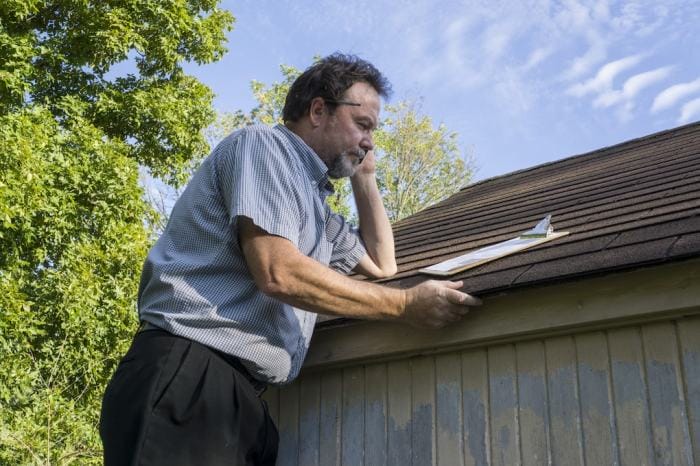
Navigating the insurance claim process for roof damage requires an understanding of its different stages, the roles and responsibilities involved, and the typical timeline for processing and settling claims. This knowledge will help you effectively communicate with your insurance adjuster and ensure a smooth claims resolution.
Stages of the Insurance Claim Process
The insurance claim process typically involves the following stages:
- Filing the Claim: The policyholder initiates the claim process by contacting their insurance company and providing information about the roof damage, including photos, repair estimates, and any relevant documentation.
- Assigning an Adjuster: The insurance company assigns an adjuster to assess the damage and determine the coverage and benefits available under the policy.
- Inspection and Evaluation: The adjuster visits the property to inspect the roof damage, take measurements, and assess the extent of the repairs needed.
- Claim Settlement: Based on the adjuster’s evaluation, the insurance company determines the amount of coverage available and issues a settlement offer to the policyholder.
- Repair or Replacement: The policyholder uses the settlement funds to repair or replace the damaged roof. The insurance company may require proof of completion before releasing the full settlement amount.
Roles and Responsibilities
The key players in the insurance claim process include:
- Policyholder: The property owner who has suffered the roof damage and is seeking compensation from their insurance company.
- Insurance Adjuster: The insurance company representative responsible for evaluating the damage, determining coverage, and negotiating the settlement.
- Contractor: The professional hired by the policyholder to repair or replace the damaged roof.
Timeline for Processing and Settling Claims
The timeline for processing and settling insurance claims can vary depending on the severity of the damage, the availability of adjusters, and the insurance company’s policies and procedures. However, in general, the process can take anywhere from a few weeks to several months.
Working with Contractors
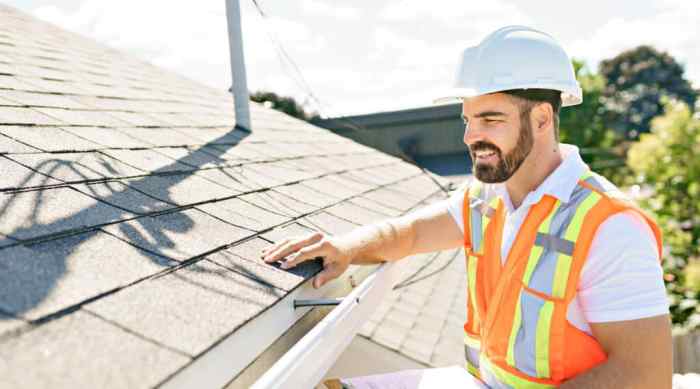
Hiring a reputable and qualified contractor is crucial for successful roof repairs. Reputable contractors have the expertise and experience to assess the damage accurately, provide high-quality repairs, and ensure the roof’s longevity.
Obtaining Estimates
To ensure you’re getting a fair price and quality work, obtain estimates from multiple contractors. Ask for detailed estimates that include the scope of work, materials to be used, labor costs, and a timeline for completion. Compare these estimates carefully, considering the contractor’s reputation, experience, and the materials they propose to use.
Communicating Effectively
Effective communication with the contractor throughout the repair process is essential. Clearly convey your expectations and concerns, and ensure the contractor understands the desired outcome. Ask questions, seek clarifications, and maintain open communication to avoid misunderstandings and ensure a satisfactory result.
Common Challenges and Solutions
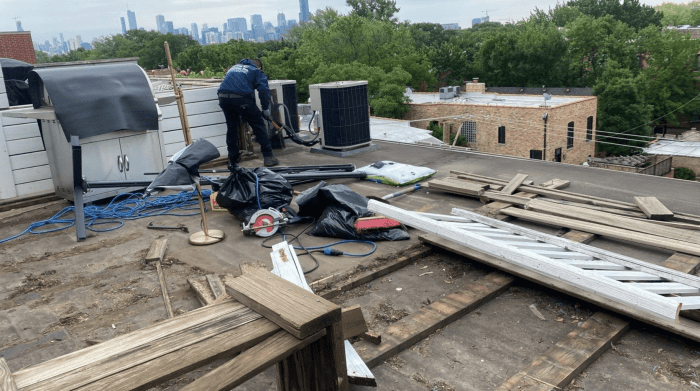
During the meeting with the insurance company’s claims representative, many homeowners experience common challenges. Here are some common obstacles and workable solutions to address them effectively.
Unclear or Inadequate Claim Coverage
Challenge: The insurance policy’s coverage for the roof damage may be confusing or insufficient, resulting in disputes regarding the extent of the insurer’s liability.
Solution:
- Before meeting the claims representative, thoroughly review the insurance policy to understand the coverage terms and exclusions.
- If the coverage is unclear, seek clarification from the insurance company or an independent insurance expert.
- If the coverage is inadequate, consider purchasing additional coverage or riders to ensure proper protection.
Disagreements over the Cause of Damage
Challenge: The insurance company may dispute the cause of the roof damage, claiming it is not covered under the policy.
Solution:
- Gather evidence to support your claim, such as photos, receipts, and documentation of the damage.
- If possible, obtain a professional assessment from a roofing contractor or engineer to determine the cause of the damage.
- Be prepared to present your evidence and explain your position during the meeting.
Delays in the Claims Process
Challenge: The claims process may be lengthy and involve delays in communication, assessment, and payment.
Solution:
- Be proactive in following up with the insurance company and claims representative.
- Keep detailed records of all communication, including dates, times, and outcomes.
- If delays occur, consider filing a complaint with the state insurance department or pursuing legal action if necessary.
Low Settlement Offers
Challenge: The insurance company may offer a settlement amount that is lower than the actual cost of repairs or replacement.
Solution:
- Obtain multiple estimates from reputable contractors to support your claim for a fair settlement.
- Be prepared to negotiate with the claims representative and present a compelling case for a higher settlement.
- If necessary, consult an attorney specializing in insurance claims to assist with the negotiation process.
Denial of Claim
Challenge: The insurance company may deny the claim altogether, citing various reasons such as policy exclusions or failure to provide sufficient evidence.
Solution:
- Review the denial notice carefully and identify the specific reasons for the denial.
- If you believe the denial is unfair or incorrect, consider filing an appeal with the insurance company.
- You may also consider pursuing legal action if the denial is not overturned during the appeals process.
Legal Considerations
Understanding your legal rights and responsibilities as a homeowner is crucial when dealing with insurance claims for roof damage. This knowledge empowers you to make informed decisions throughout the claims process.
When to Involve an Attorney
Seeking legal counsel may be necessary in certain circumstances:
- Insurance Denial: If your insurance company denies your claim without a valid reason, consulting an attorney can help you understand your rights and explore legal options.
- Unfair Settlement Offer: When the settlement offer from the insurance company is significantly lower than the actual cost of repairs, an attorney can assess the fairness of the offer and negotiate on your behalf.
- Bad Faith Practices: If you suspect the insurance company is engaging in bad faith practices, such as unreasonable delays, misrepresentation, or failure to investigate the claim properly, involving an attorney can help protect your rights.
Additional Resources and Support
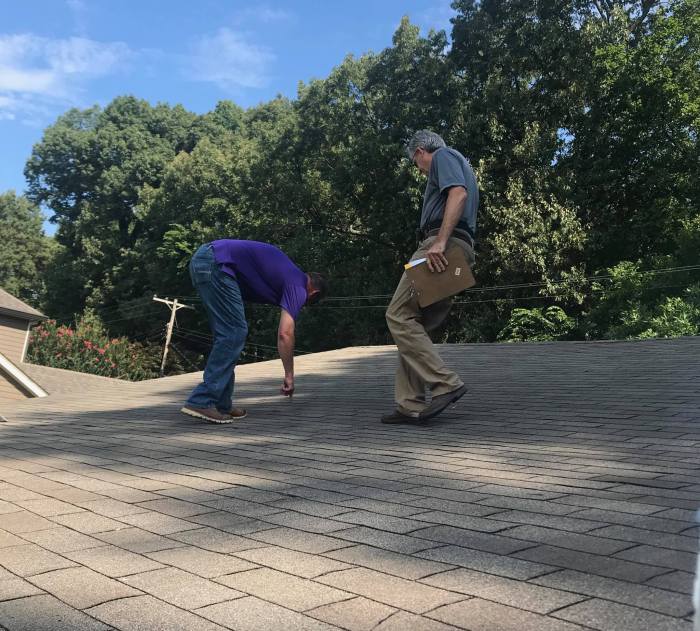
Dealing with insurance claims can be daunting, especially when it comes to roof repairs. Fortunately, there are numerous resources and organizations that offer guidance and support to homeowners navigating this process.
Joining Homeowners’ Associations
Homeowners’ associations (HOAs) are invaluable resources for homeowners seeking support and guidance in dealing with insurance claims. These organizations often provide access to legal advice, educational workshops, and insurance claim assistance programs. By joining an HOA, homeowners can connect with other homeowners who have faced similar challenges and learn from their experiences.
Seeking Advice from Consumer Protection Agencies
Consumer protection agencies, both at the state and federal levels, offer assistance to homeowners dealing with insurance claims. These agencies provide information on insurance laws, regulations, and complaint procedures. They also offer mediation services to help resolve disputes between homeowners and insurance companies.
Finding Local Support Groups or Forums
Local support groups and online forums provide a platform for homeowners to connect and share their experiences with insurance claims. These platforms offer a sense of community and allow homeowners to learn from others who have been through similar situations.
By sharing tips, advice, and resources, these groups can empower homeowners to navigate the insurance claims process more effectively.
Conclusion

Navigating the claims process with an insurance adjuster for a roof replacement can be complex and challenging. However, by following the guidelines and tips discussed throughout this article, homeowners can significantly improve their chances of a successful and fair settlement.
Preparation, effective communication, and meticulous documentation are crucial elements in dealing with insurance adjusters. Homeowners should meticulously review their insurance policy, gather relevant documentation, and keep a detailed record of all interactions with the insurance company.
Staying Informed
Staying informed about their rights and options throughout the claims process is essential for homeowners. They should familiarize themselves with the terms of their insurance policy, understand the claims process, and be aware of the potential challenges they may encounter.
Homeowners should also seek advice from reputable sources such as consumer protection agencies, insurance experts, or attorneys if necessary. By staying informed and proactive, homeowners can protect their interests and ensure a fair settlement for their roof replacement claim.
Summary
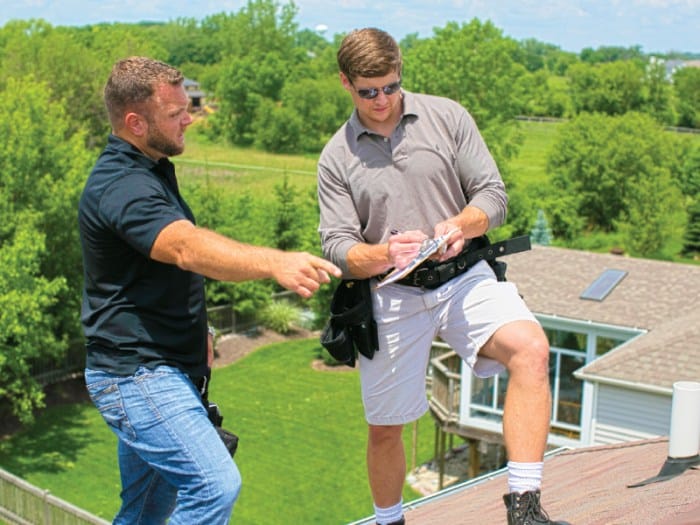
Remember, preparation, effective communication, and documentation are the cornerstones of a successful meeting with your insurance adjuster. By following the expert tips Artikeld in this guide, you’ll be empowered to navigate the claims process with confidence, ensuring a fair settlement and a timely resolution to your roofing concerns.
Stay informed about your rights and options throughout the process, and don’t hesitate to seek support from reputable resources and organizations.
Questions and Answers
What documents should I bring to the meeting with my insurance adjuster?
Gather essential documents such as your insurance policy, photos of the roof damage, receipts for repairs or replacements, and a list of contractors’ estimates.
How can I effectively communicate my case to the insurance adjuster?
Clearly explain the extent of the damage, its impact on your property’s value and functionality, and any safety concerns. Use photos, videos, and written documentation to support your claims.
What strategies can I employ to negotiate a fair settlement?
Remain calm, respectful, and professional during negotiations. Present a persuasive case for a reasonable settlement amount, backed by evidence and documentation.
What are some common challenges homeowners face during the meeting with the insurance adjuster?
Common challenges include disputes over the extent of damage, disagreements about the value of the claim, and delays in the claims process. Be prepared to address these challenges with patience and persistence.
Where can I find additional resources and support during the insurance claims process?
Reputable resources include homeowners’ associations, consumer protection agencies, and local support groups. These organizations offer guidance, support, and a platform to connect with others going through similar experiences.



